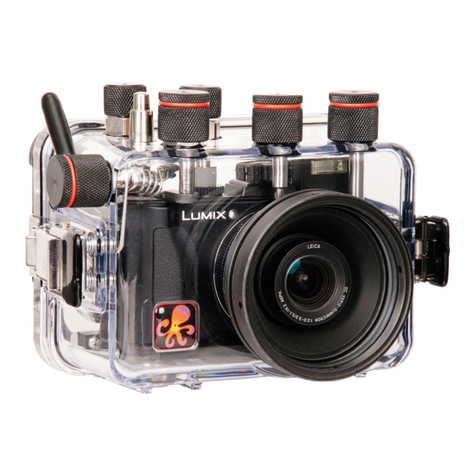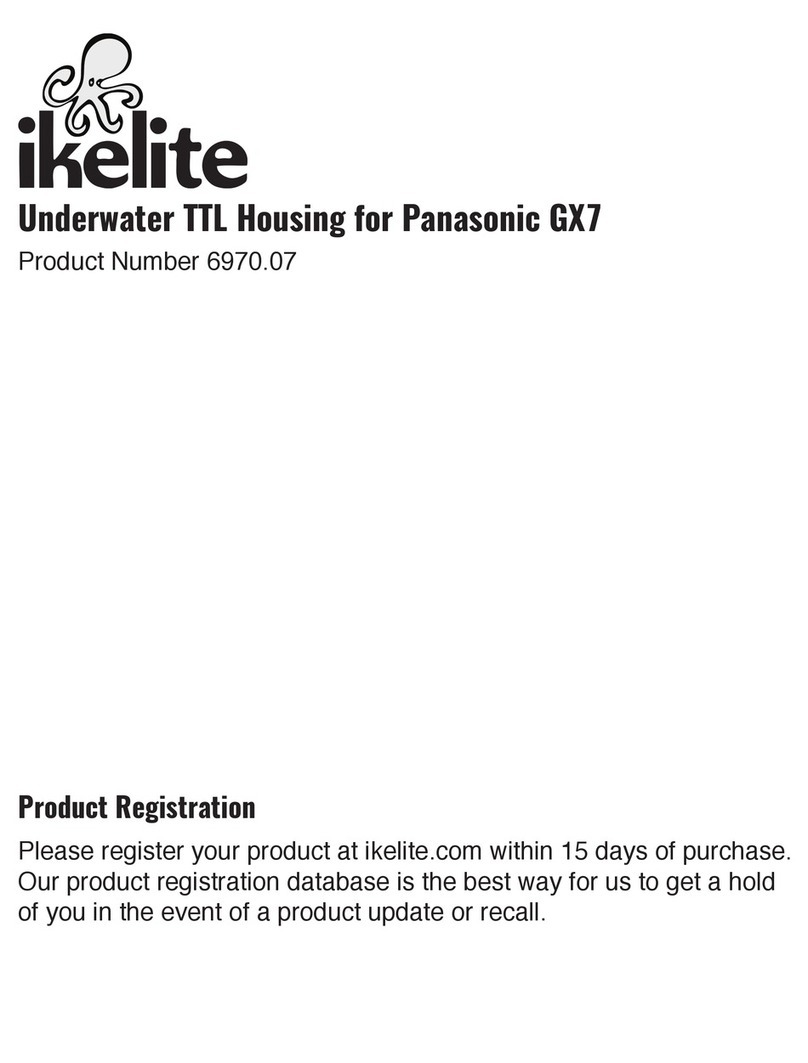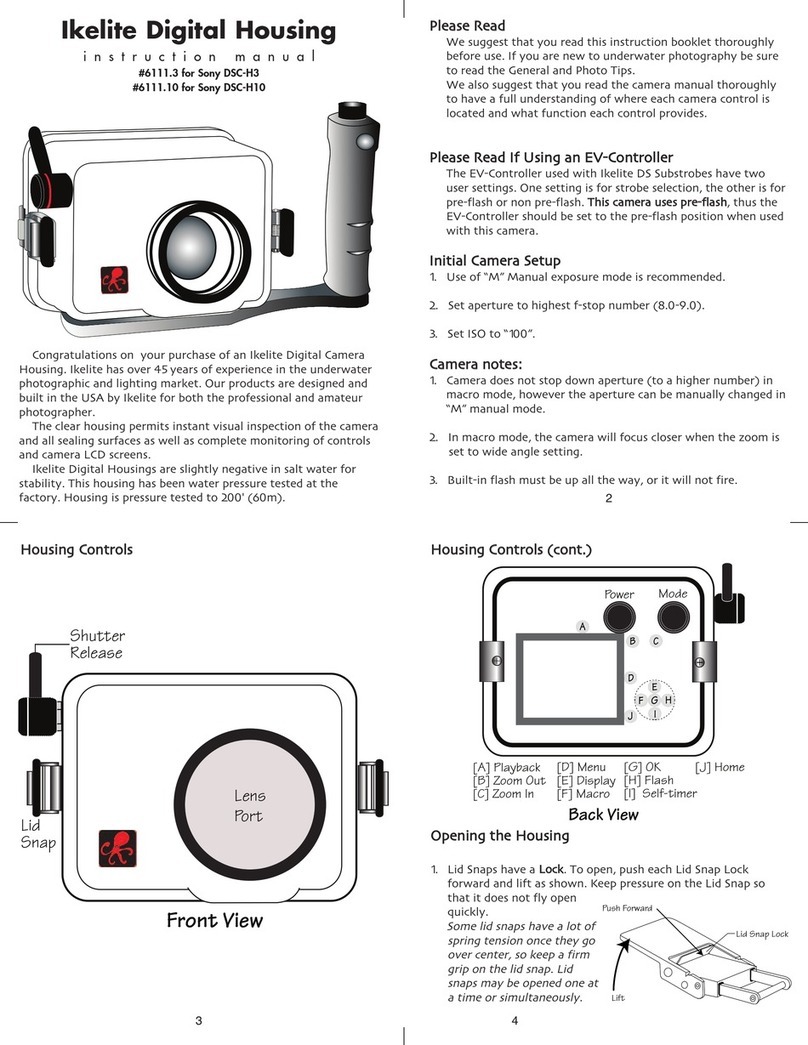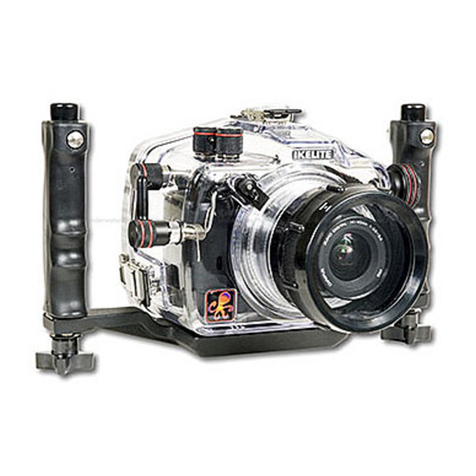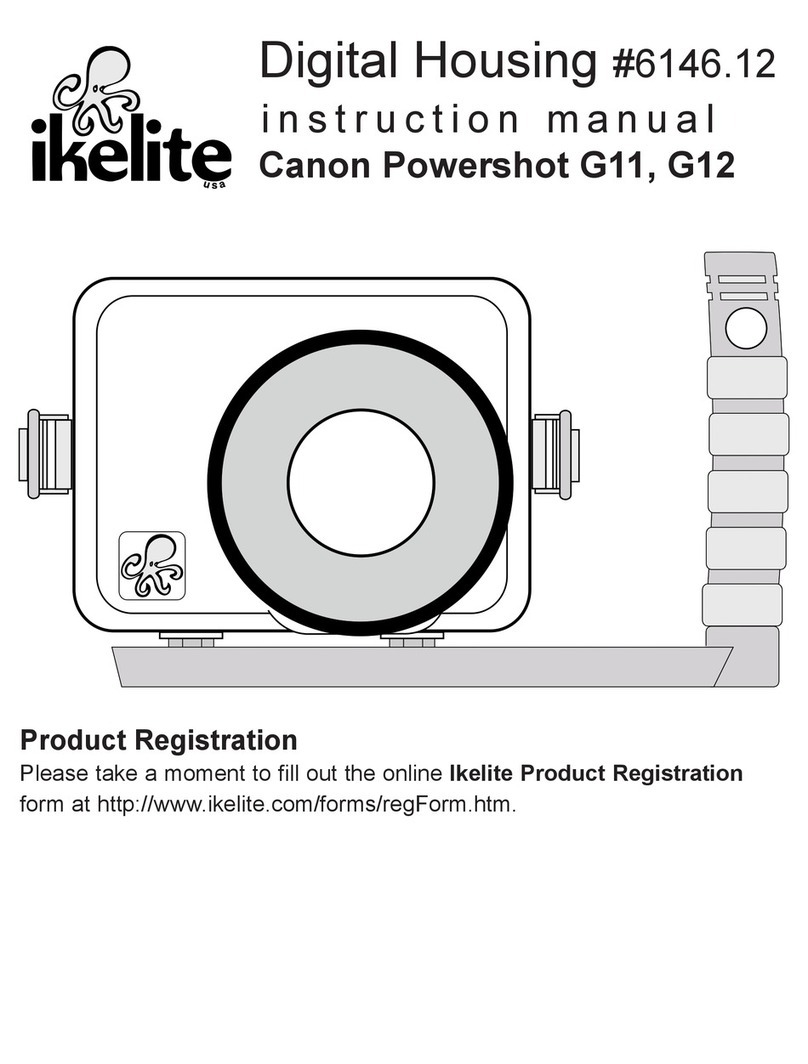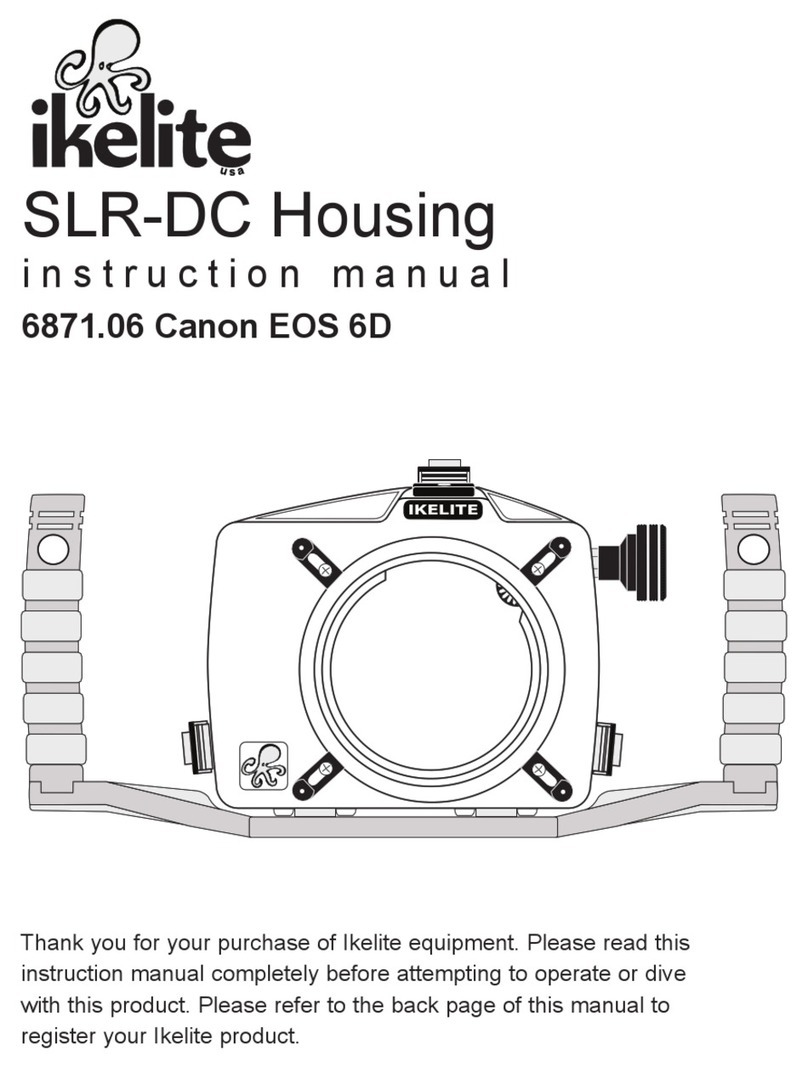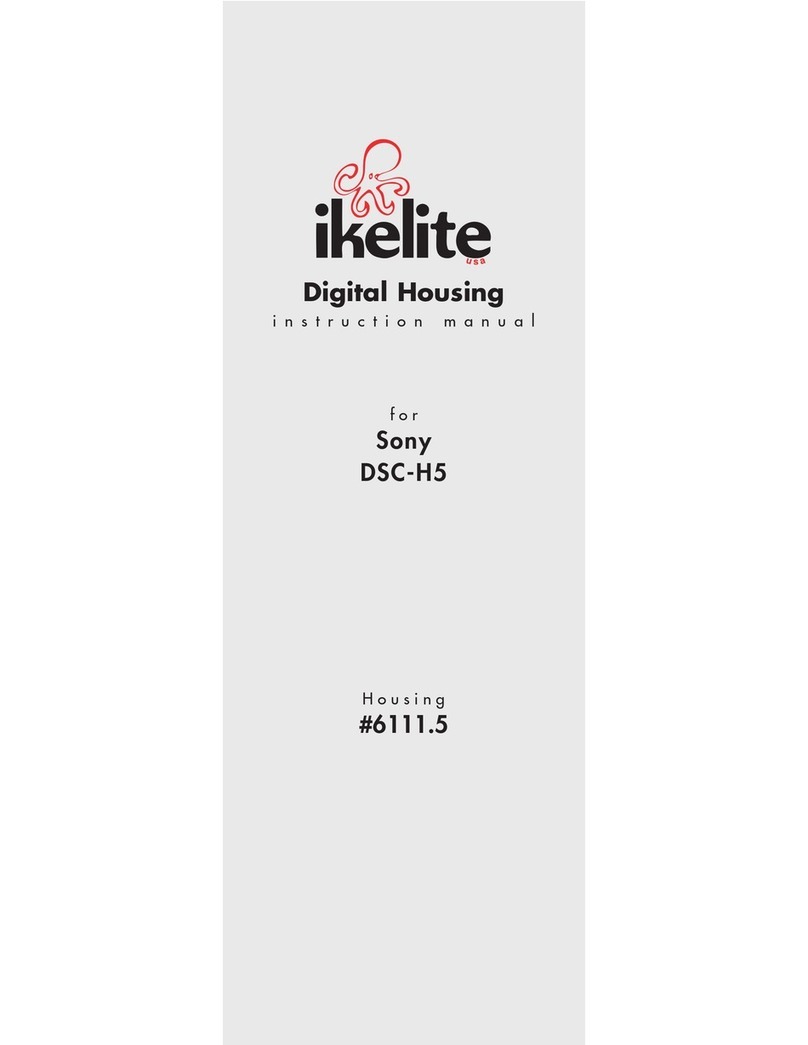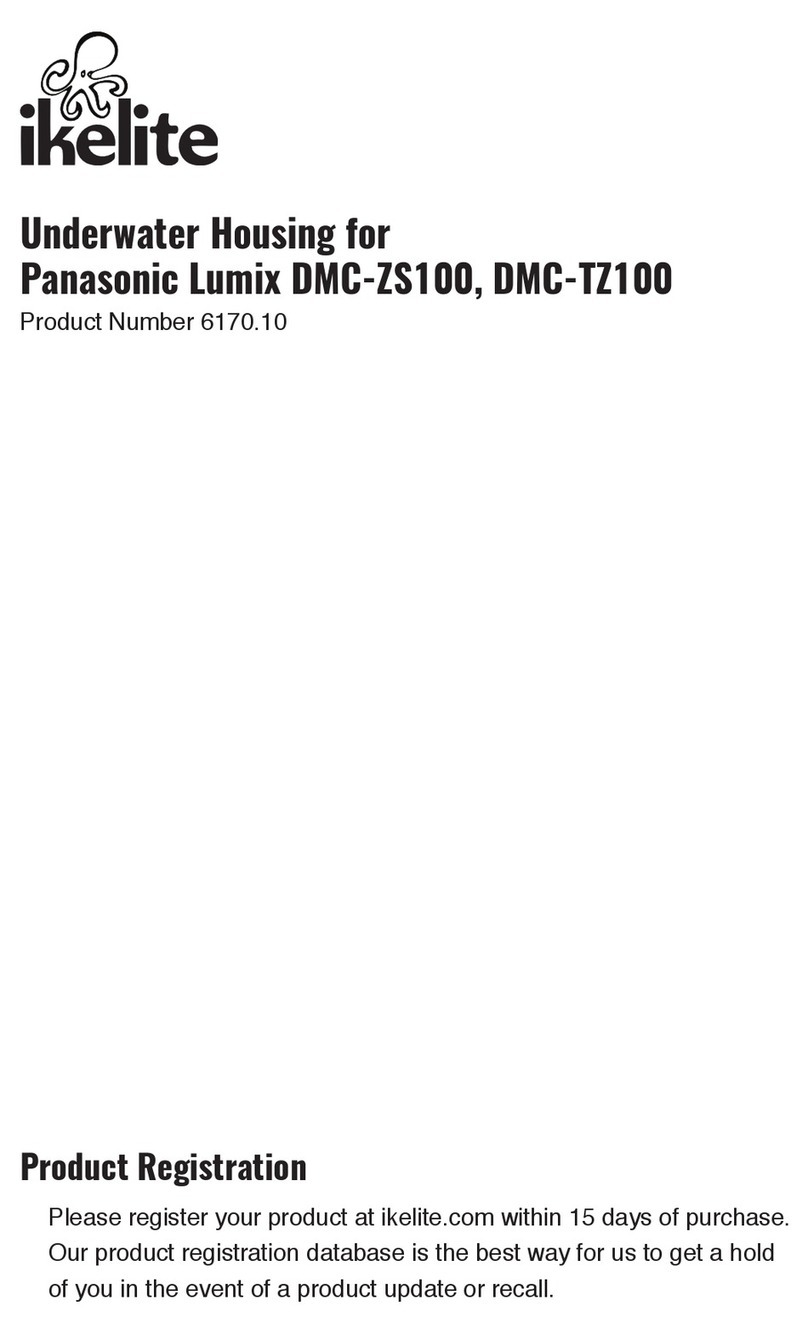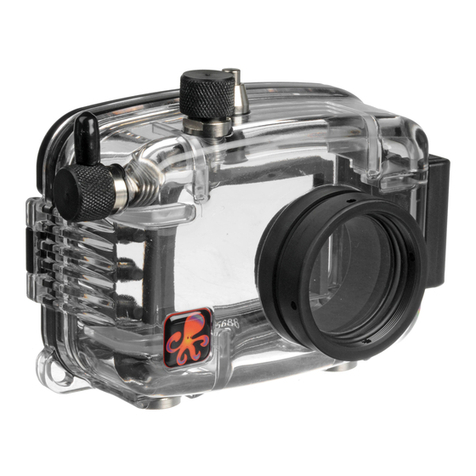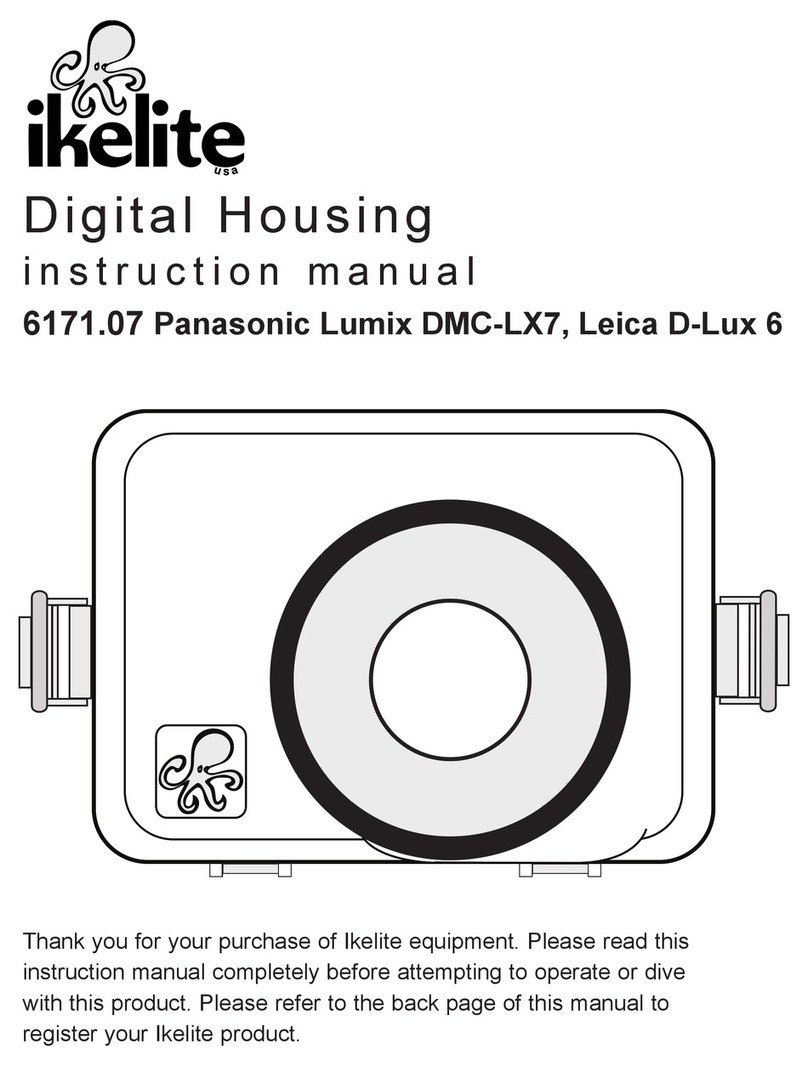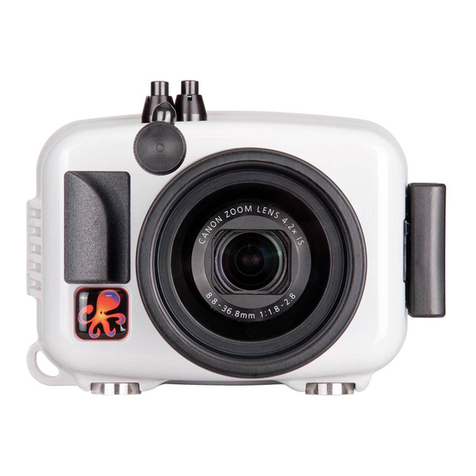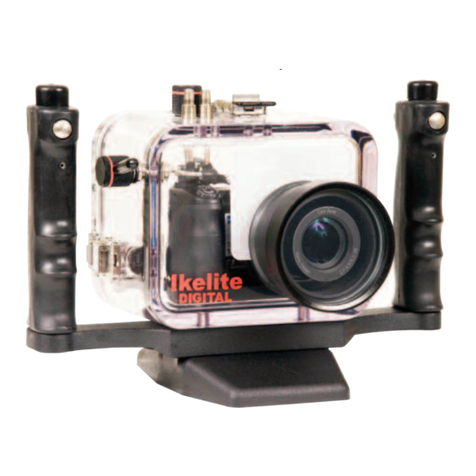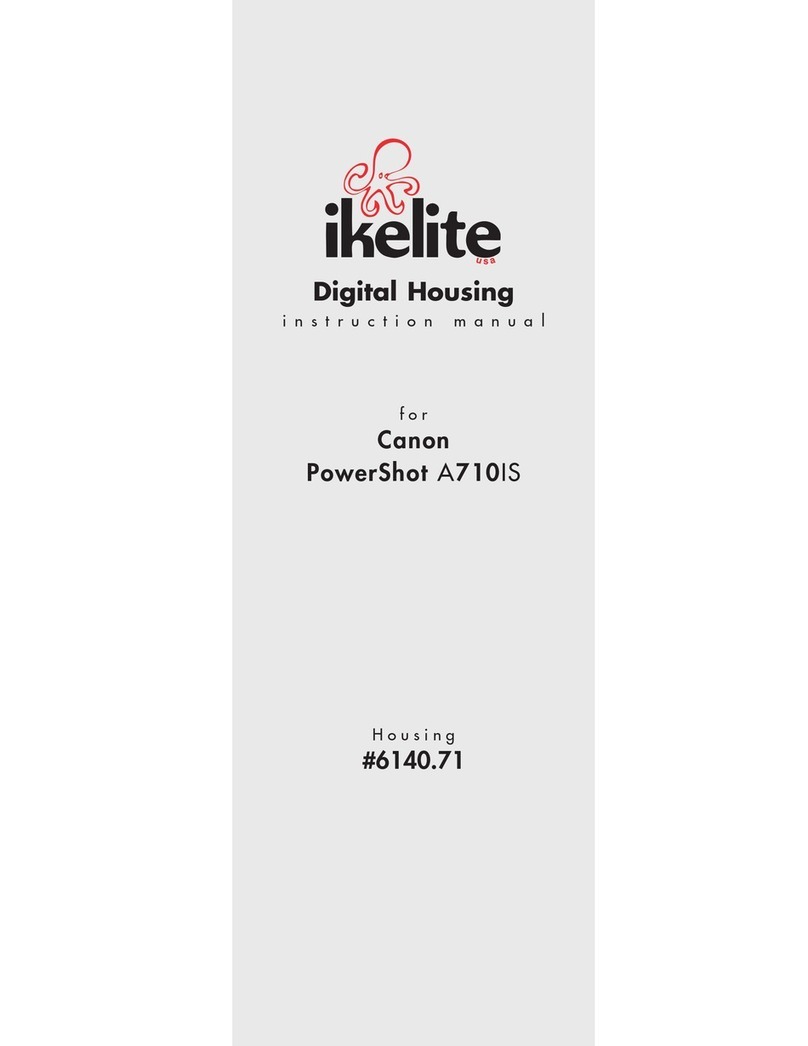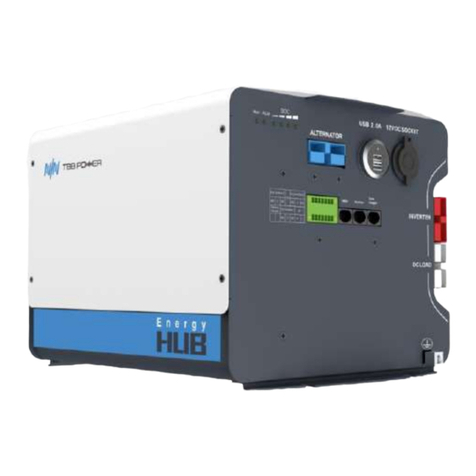
20
C
Co
on
nt
tr
ro
ol
lM
Ma
ai
in
nt
te
en
na
an
nc
ce
e
Ikelite controls are designed to provide years of reliable service
with minimal maintenance.
1. Push button controls require no maintenance other than rinsing
in fresh water after saltwater use. If a push button control
becomes difficult to push or if it sticks when depressed, soak the
housing in luke warm fresh water. After a few minutes operate
the push button. If this does not correct the problem, return the
housing to Ikelite for maintenance.
2. Some of the controls have long shafts. These controls can be
pulled out, exposing the shaft (see drawing).
To lubricate the control, gently pull on the knob until the
stainless steel shaft is exposed. Lightly lubricate the shaft, then
move the shaft in and out several times. This will lubricate the
x’ring in the Ikelite control gland. This should be done before
using the housing after a prolonged storage period, or once a
week when the housing is in use.
housing
lubricate shaft
pull out to
expose shaft
19
M
Ma
ai
in
nt
te
en
na
an
nc
ce
e
The Ikelite Housing should be given the same care and attention as
your other photographic equipment. In addition to normal
maintenance we recommend that the housing be returned to
Ikelite periodically to be checked and pressure tested.
1. D
Do
oN
No
ot
tleave the camera and housing in direct sunlight for
prolonged periods. Heat may damage the camera.
2. D
Do
oN
No
ot
tship the camera in the housing.
3. Before using the housing, always check the tightness of the s
se
et
t
s
sc
cr
re
ew
win each control knob.
Check each c
co
on
nt
tr
ro
ol
lg
gl
la
an
nd
dpenetrating the housing to make sure
they are tight. There is a slight chance that either could vibrate
loose during travel.
4. Keep the back and port o’ring clean and lightly lubricated. To
lubricate remove the o’ring from the back. Put a small amount
of lkelite lubricant on your fingers. Draw the o’ring through
your fingers to apply a light coating of lubricant. Only apply
enough lubricant to make the o’ring feel slick. D
Do
oN
No
ot
ts
st
tr
re
et
tc
ch
h
t
th
he
eo
o’
’r
ri
in
ng
g. This light coating of lubricant will help to keep the
o’ring from drying out and will help to show a dark sealing line
when the housing back is properly sealed.
5. Keep the area where the o’ring fits and the sealing surface clean.
6. Rinse the housing exterior thoroughly in fresh water after each
salt water use. Depress push buttons several times during rinse.
Dry with a soft cloth. Dry port to eliminate water spotting.
After several uses in salt water soak the housing in a mild soap
solution, rinse and dry.
C
CA
AU
UT
TI
IO
ON
N:
:
N
Ne
ev
ve
er
ru
us
se
es
sp
pr
ra
ay
yl
lu
ub
br
ri
ic
ca
an
nt
ts
sa
as
st
th
he
ep
pr
ro
op
pe
el
ll
la
an
nt
t
i
in
ng
gr
re
ed
di
ie
en
nt
tc
ca
an
nc
ca
au
us
se
et
th
he
ep
pl
la
as
st
ti
ic
ch
ho
ou
us
si
in
ng
gt
to
oc
cr
ra
ac
ck
k.
.
17
L
Le
en
ns
s&
&P
Po
or
rt
tR
Re
ec
co
om
mm
me
en
nd
da
at
ti
io
on
ns
s
For the latest information on Lens & Port recommendations visit our
web site at www.ikelite.com or contact Ikelite.
NNiikkoonn....................................................66””DDoommee................FFllaattPPoorrtt................FFllaatt((ww//ffooccuuss))........88””DDoommee
10.5mm 1:2.8G ED ....5503.15
14mm 1:2.8 ED ..........Not Recommended
16mm Fisheye............5503.15
16mm Fisheye............5503 (digital camera)
18mmD ......................5503
20mmD ......................5503.20 (8)
24mmD ......................5503
28mmD ......................5503
35mmD ......................5503
60mm MacroD ..........5503.50 ..........5502.41 ..........5506 (7) ............5510.80
105mm MacroD ..................................5505.5 ............5508.05 (3) ........5510.80
12-24mm DX(2)(14) ..5503.50 ..............................................................5510.80
17-35mm (11) ..............5503.55 ..............................................................5510.80
*18-35mm ED ............5503.50 ..............................................................5510.80
*18-70mmDX(1) ........5503.55 ..............................................................5510.80
*20-35mmD ................5503.50 ..............................................................5510.80
*24-50mm ..................5503.50 ..........5505............................................5510.80
*24-85mm (14) ..........5503.50 ..............................................................5510.80
(*) Zoom lenses that do not focus to 12” require a +4 diopter close-up lens
be added to the lens when used underwater behind a dome port.
(1) Requires #5509.28 zoom and clamp (included with #6805.1 housing)
(2) Requires #5509.12 port sleeve with rubber pads to operate zoom lens.
(3) #5508.05 port allows switching from manual to auto focus underwater.
(7) Manual focus only with #5506 port.
(8) #5503.20 dome port is a #5503 with special #5504.20 shade for newest
f/2.8 “D” 20mm lens.
(14) 8” dome recommended for this lens.
Lens & Port Recommendations continued on page 18.
18
L
Le
en
ns
s&
&P
Po
or
rt
tR
Re
ec
co
om
mm
me
en
nd
da
at
ti
io
on
ns
s
For the latest information on Lens & Port recommendations visit our
web site at www.ikelite.com or contact Ikelite.
*24-120mmD ..............Not Recommended
*24-120mm IF ............Not Recommended
*28-70mmD................5503.50 ..............................................................5510.80
*28-80mm 1:3.5G ......5503.50 ..............................................................5510.80
*28-85mm ..................5503.80..............................................................5510.80
*28-105mm D macro 5503.81 (9) ........................................................5510.80
*28-200mm................5503.80..............................................................5510.80
*35-70mm ..................5503
*35-80mmD................5503.50 ..............................................................5510.80
*35-105mmD ..............5503.50 ..............................................................5510.80
*35-135mmD ..............5503.80..............................................................5510.80
(*) Zoom lenses that do not focus to 12” require a +4 diopter close-up lens
be added to the lens when used underwater behind a dome port.
(9) f3,5-4.5 “D” AF zoom needs custom zoom clamp and sleeve included
with #5503.81 port.
